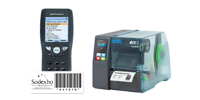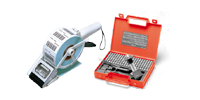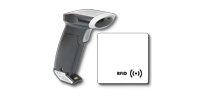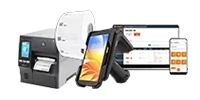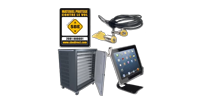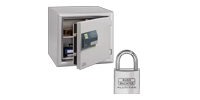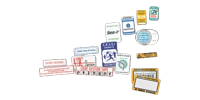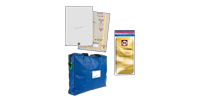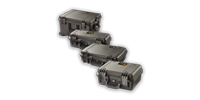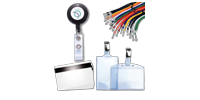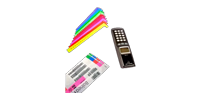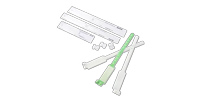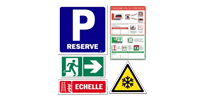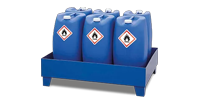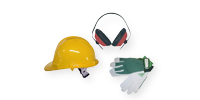1948, Norman Joseph Woodland invented the barcode and since then, this revolutionary invention surrounds us daily. Mainly used in the retail industry, barcodes can be used to obtain information about a product: origin, price, weight, unit price, description... What is its history? How do we read it and how do we use it nowadays? We reveal you everything about barcodes!
How does barcode reading work?
1D barcodes simply use the same system as Morse code.
Invented in 1840, Morse code is a series of long and short pulses that convert the alphabet into electrical, audio or visual signals. The notable difference is that Morse code uses dots and barcode uses vertical lines. The main reason for this difference is legibility: a black bar is much more perceptible to light than a single dot.
Norman Woodland was therefore inspired by this technology to create the barcode. An assembly of black and white lines corresponds to a particular number. To read it easily and quickly, he relies on a physical phenomenon which is the absorption of the wavelength. The black color absorbs the wavelength and does not see the light, unlike the white. According to the wavelength received by the receiver (shower, reader, PDA etc), it will be able to interpret the message in binary code: the white corresponds to the code 1 and the black to the 0.
The reader will then transcribe this binary sequence by numbers and letters. But there are many ways to transcribe these vertical bars:
- the code 2 of 5: the binary sequence of 5 digits corresponds to a number (from 1 to 9). For example, the sequence 10001 corresponds to the number 6.
- the interleaved 2 of 5 code: which takes into account the width of the bars, for example, the sequence Large, Narrow, Narrow, Large, Narrow corresponds to an 8
- the plessey code: the binary sequence of 4 digits corresponds to a hexadecimal character: from 0 to 9 and from A to F. For example, the sequence 1111 corresponds to F.
With the 2 by 5 code system alone, it is possible to generate 9,999,801,000 barcodes.
There are other barcode reading grids but these are the most used and understandable.
What is the difference between 1D and 2D barcodes?
The 1D (one-dimensional) codes are a version below the 2D (two-dimensional) code. 2D (two-dimensional) barcodes are a combination of small black and white squares that are much more numerous than the bars of 1D codes.
Its operation and its reading are similar to 1D but a little more complex. This allows to store more information in the code. For example, PDF barcodes can store 929 characters and Quick Response Code (QR code) can contain up to 7,089 characters. Other 2D code formats include datamatrix, Aztec and Maxicode.
1D barcodes are often more affordable and readable by all readers. However, it limits us in the storage capacity (only 48 characters maximum) and can be read only in one direction.
Unike the 1D, the bidimensional codes allow to store more information because it uses the whole area (Y and Z axis) to encode data. It is readable in all directions and remains readable even partially erased or damaged. However, some code readers can scan and read this type of code.
Especially the 1D and 2D barcodes have different uses. The 1D codes have for purpose:
- to scan the articles at the checkout,
- to register the movements of stocks,
- receipt and delivery of goods,
- to make the inventory,
Conversely, dimensional barcodes are frequently used to:
- Access a website very quickly,
- Watch a video online,
- Easily connect to a wireless network,
- Save information on a business card,
- Consult the menu of a restaurant,
- Leave a review in a store,
- Scan an anti-Covid certificate
The different types of 1D barcode ?
There are different types of barcode, all managed by the GS1 organization which allows a unique number to a product of a manufacturer. There are many 1D barcodes:
- Codabar barcodes
- Code 128 barcodes
- Code 39
- Code 93 barcode
- EAN-13 barcodes
- EAN-8 barcodes
- Code 39 Extended
- GS1 DataBar Extended
- MSI/Plessey barcodes
- UPC-E barcodes
Which data collector for which use?
Depending on the use of the barcode, it will be necessary to choose one or the other reader. There are 3 families of scanner: the terminal, the handheld and the reader.
According to your professional activity, the choice of the bar code scanner will depend mainly on the type of bar code to be read: 1D or 2D. It is important to know that this identification device can read only 1D or 2D codes or both.
Other criteria can be taken into account when choosing the scanner, for example:
- Form of the barcode scanner: handheld/gun, reader equipped with feet, flush mount model,
- Technology used: do we only need to register a barcode or do we need to associate information to the code? Or do we have to see the barcode information directly on the scanner?
- Type of use: Sedentary or nomadic. For a second use, prefer the wireless model.
To simply read a 1D barcode in a fixed way, choose a wired handheld scanner from our range of barcode readers. On the contrary, if you need to be nomadic, choose the wireless barcode reader or mini USB key.
Only our barcode scanners and barcode terminals can read 2D barcodes. If you only need to read a code, choose a reader that is less expensive and can be used in plug and play.
In case you want to record barcodes on a device, barcode terminals are the ones you need. There are devices with screens that allow you to create your own software or application, the solution to your specific need.
How to program a barcode reader?
The handhelds and readers, as well as the mini handhelds are devices that are plug and play, which means that it is not necessary to use any software to read the codes through these devices.
The terminals have, for the most part, screens, which means that there must be a program to use to its potential.
We offer a small program in the OPH-3001 terminal and the OPL 9815.
These terminals can be delivered with a pre-installed inventory program that allows you to access the different functions of your terminal such as INVENTORY, UNLOAD and SETUP. This program allows the terminal to scan all 1D barcodes (and entry dates + quantity to be entered on the keyboard).
For any other program, contact us so that we can establish your needs. We are able to create programs adapted to your needs.

